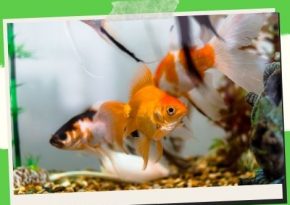
Part One of The Simplest Saltwater Aquarium Setup
Establishing the Tank’s Basic Requirements
Everyone has admired the huge saltwater aquariums that are typically found at dentists’, doctors’, cosmetologists’, and marine enthusiasts’ workplaces but has thought they would be far too much labor to bring into their own houses. Thankfully, this is not the situation. While setting up a saltwater aquarium can be expensive, there is a fairly straightforward technique that nearly always results in success.
Step 1: Put the equipment together and get ready. The aquarium and all of its accompanying components have almost definitely been exposed to several pollutants during packaging and production, such as dust and chemicals, which will be extremely damaging to the fish if it is given free rein in the aquarium. Every component of the aquarium should be well cleaned with a soft piece of cloth before usage to avoid scratches.
Step 2: Insert all of the parts into the tank WITHOUT including any ornamental elements. Then, fill the tank with salt water until the fill line is reached (which may or may not already be indicated on the aquarium; normally, 2 to 3 inches from the top is sufficient to prevent significant spillage when the tank is cleaned or the fish are fed) (if you have chosen to make your own saltwater solution read below for instructions). To make sure all parts are working properly, turn on the tank and let it run for 24 hours.
How to Make Your Own Saltwater
All saltwater marine species live in the ocean naturally, making it the ideal water supply for saltwater aquariums. However, it is possible to produce saltwater if ocean water is not accessible and the owner of a saltwater aquarium does not want to buy a pre-made saltwater solution. To create saltwater as closely as possible to the natural environment, it is crucial to utilize a sea salt mixture free of impurities rather than table salt. Any retailer that specializes in the sale of tropical fish carries these combinations.
Step three is to decorate your aquarium. Organic materials not only look better than their plastic equivalents, but they also give fish a better environment to live in. It is vital to take into account the sorts of fish that will be living in the tank before picking its decorations because, in the natural, fish frequently use what humans assume to be decorations as a refuge.
Start the 30-day cycling process in step 4 while performing frequent ammonia tests. You can do this whether or not the tank contains fish.
By following these easy instructions, novice aquarium enthusiast can put their anxieties aside and profit from a happy, healthy aquarium in the comfort of their own home.
Save/Share this story with QR CODE
Disclaimer
This article is for informational purposes only and does not constitute endorsement of any specific technologies or methodologies and financial advice or endorsement of any specific products or services.
 Need to get in touch?
Need to get in touch?

We appreciate your reading. 
1.) 

Your DONATION will be used to fund and maintain NEXTGENDAY.com
Subscribers in the Philippines can make donations to mobile number 0917 906 3081, thru GCash.
3.) 
4.) 
AFFILIATE PARTNERS

World Class Nutritional Supplements - Buy Highest Quality Products, Purest Most Healthy Ingredients, Direct to your Door! Up to 90% OFF.
Join LiveGood Today - A company created to satisfy the world's most demanding leaders and entrepreneurs, with the best compensation plan today.

 Business, Finance & Technology
Business, Finance & Technology

 Business Technology, Finance Technology & Information Technology
Business Technology, Finance Technology & Information Technology





